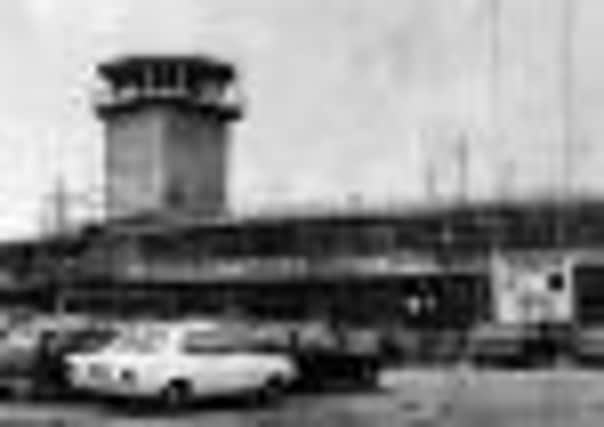Aerodrome that became Yorkshire’s gateway to the world


It was a miserable foggy day and the three Leeds-based businessmen behind the aerodrome, now Leeds Bradford International Airport (LBA), could have been forgiven for questioning their wisdom in creating an airport on such a windswept plateau in West Yorkshire.
The aerodrome was built on 60 acres of grassland along the old Bradford to Harrogate road and in its early days was used mainly for training flights. It was certainly a world away from today’s hi-tech airport which flies to more than 65 destinations and attracts more than 2.5 million passengers a year.
Advertisement
Hide AdAdvertisement
Hide AdBut its history is a fascinating one. In 1935, the airport started its first scheduled flights to Newcastle, Edinburgh, Blackpool and the Isle of Man, and during this period the infamous Hindenburg airship flew over Yeadon supposedly on a PR stunt, although it later emerged it was secretly filming British air bases.By the end of that decade, all civil flights had stopped following the outbreak of war and it became RAF Yeadon.
During the ensuing war years more than 4,500 aircraft, including Lancaster and Lincoln bombers, were built at the adjacent Avro factory which played a key role in the Allied war effort and was, at the time, reportedly the largest free-standing structure in Europe.
Commercial flights did not resume until 1947 and by the mid-50s Belfast, Jersey and Dusseldorf were added to Yeadon’s destination list. The first daily London service started in 1960 and later that year Aer Lingus started flights to Dublin. In 1965, a new runway was built and a new terminal building was opened three years later, after a fire had destroyed the previous one.
By the 70s, tourism had become big business. Britannia Airways, on behalf of Thomson Holidays, started operating flights to Spain and Portugal. The Government at the time decided that if its runway was extended it could be upgraded to a regional airport and in 1982 work started on a £23m scheme that involved diverting the A658 Bradford to Harrogate road (including incorporating a twin tunnel under the runway) and substantial improvements to the terminal facilities.
Advertisement
Hide AdAdvertisement
Hide AdThe completion of the runway extension was marked on November 4, 1984 with two pleasure flights organised by the Yorkshire Post, which chartered a British Airways jumbo jet for the day calling it The Spirit of Yorkshire.
Over the years, many famous people have breezed through the airport terminal, including Nelson Mandela, Louis Armstrong, Michael Jackson, Madonna and members of the Royal family. But none have arguably caused such a stir as the first time Concorde landed at Yeadon in 1986.
Such was the lure of this iconic aircraft that an estimated 60,000 people descended on the airport to see it touch down. There were rumours among those who turned up that it had been diverted to Manchester because of high winds, but these proved false and the crowds watched as Concorde made a safe, albeit bumpy, landing.
The airport became a limited company in 1987, and by the mid-90s restrictions on its operating hours were removed, meaning that flights could depart from and fly into Leeds Bradford at any time of day or night.
Advertisement
Hide AdAdvertisement
Hide AdTony Hallwood, Leeds Bradford Airport’s commercial director, says the airport has played a significant role in the region’s economic success. “For a lot of people in Yorkshire it’s the gateway to the world. It’s become the fastest growing airport in the UK on the back of the strength of our regional economy,” he says.
Hallwood remembers working at the airport on one of its busiest days during Euro 96. “We had French and Spanish fans descending on the airport, it was a really colourful and heady mix and we also had Concorde on that day, too.”
Ken Cothliff, author of Yeadon Above the Rest – an illustrated history of Leeds Bradford Airport, believes the airport’s story is one worth telling. “It has an interesting history and it’s one that’s not really been told until now and I think it has a great future. It won’t ever be as big as Gatwick or Manchester, but it’s a main regional hub right in the centre of the UK.”
As well as being the country’s fastest growing airport, it’s also the highest. “It does get low cloud but that is less of a problem for today’s modern aircraft and Yeadon can often be in sunshine while Manchester has low lying fog, so it has its benefits,” says Cothliff.
“A lot of people pooh-poohed the idea of having an airport at Yeadon back in the 1930s because it was so high up, but with hindsight it proved to be a very wise decision.”